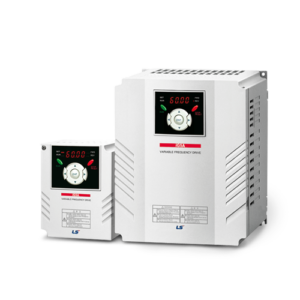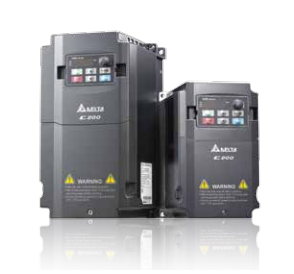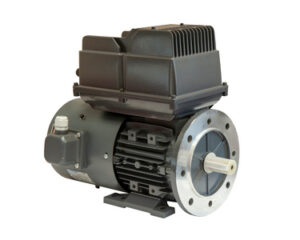What is an Inverter?
The inverter is an electrical device that allows for precise regulation of the speed of the electric motor, as well as its control and work safety.
Power inverter (DC / AC power converter) - an electrical device that converts direct current (DC) into which it is powered, into alternating current (AC) with an adjustable output frequency.
Single-phase (1 V) frequency converters with a 230-phase output (3 x 3 V) - enable the operation of three-phase induction motors (usually up to 230 kW) with rated parameters, where there is no three-phase supply (however, they require changing the connection system with typical for low power motors "star" to "triangle")
3-phase (400 V) frequency converters have both a 3-phase input and output (3 x 400 V) - they enable the operation of three-phase motors from the lowest power (0,06 kW) to tens of kilowatts and more ...
The use of inverters gives us a number of benefits, from energy savings and motor safety to very advanced motor control capabilities.
What types of inverters are there?
The inverters can be powered single-phase (230V) and three-phase (400V)
Regardless of the power supply method, they can be scalar-controlled inverters ((with the U / f algorithm) it is used in simple applications, where precise speed control is not required and there is no "heavy start-up") and vector-controlled inverters, which are divided into controlled sensorless and with feedback.
In sensorless control, the rotational speed is calculated on the basis of the mathematical model of the electric motor, without the use of an additional sensor.
In the case of converters with feedback, the control is based on the measurement of the current speed value measured by an incremental encoder mounted on the motor shaft.
A converter with vector control is able to maintain a constant value of the motor torque over the entire speed control range, starting from a supply frequency of 0.5 Hz. In this case, the drive can only control one motor at a time. It separately controls the torque and the flux of the winding, thanks to which such a high efficiency of operation is possible.
Importantly, any vector control drive can operate in scalar mode and this is usually the default control mode.
The converter operating in the vector mode requires a precise introduction of the motor parameters and the performance of auto-configuration. As a result, the inverter will measure the remaining electrical values that cannot be found on the motor nameplate, which will keep the torque constant.
What's the difference between a single-phase inverter and a three-phase inverter?
Among the frequency converters for three-phase motors, we distinguish single-phase and three-phase converters.
Single-phase inverter is powered from one phase 230 VAC, while the output has 3 phases with phase-to-phase voltage of 230 V. It is used in applications using small motors up to 2.2 kW, with a rated voltage of 230 V.
The three-phase inverter is powered from three phases 3 × 400 VAC. The inverter output also has three phases with a phase-to-phase voltage of 400 V. Frequency converters for three-phase motors have the ability to work in larger applications, they can operate in the output power range, usually from 0.7 kW to even 500 kW. They are more widespread on the market than single-phase inverters and are therefore equipped with a number of functions.
How to choose an inverter?
The inverter is selected for the motor, based on the motor power or current. This information can be found on the rating plate on the motor and is marked with: power [kW] and current [A].
We also select the inverter for the appropriate application and control. There are two types of controls in the inverter:
- basic control - using the panel or analog,
- advanced control - using a control network such as profinet.
Each of our inverter has a basic control, while for advanced control we recommend contacting our automation department.
It is possible to supply several motors with one frequency converter. In this case, the current flow must be calculated to properly select the inverter.
Application of inverters
Inverters are commonly used in all industries where we want to control the engine speed to obtain sufficiently fast movement. Inverters serve as additional motor protection by monitoring its operation, and the motor that works in conjunction with the inverter consumes less electricity.
Most often, inverters are used to change the speed of movement of production belts, lathes, compressors, pumps or conveyors, both in industry and in household appliances (fans, washing machines). It is equally popular to use inverters in automatic gates to enable smooth opening and closing. Among them there are single-phase and three-phase models. The latter are suitable for controlling the operation of lathes, table drills, submersible pumps, fans and sawmills.




